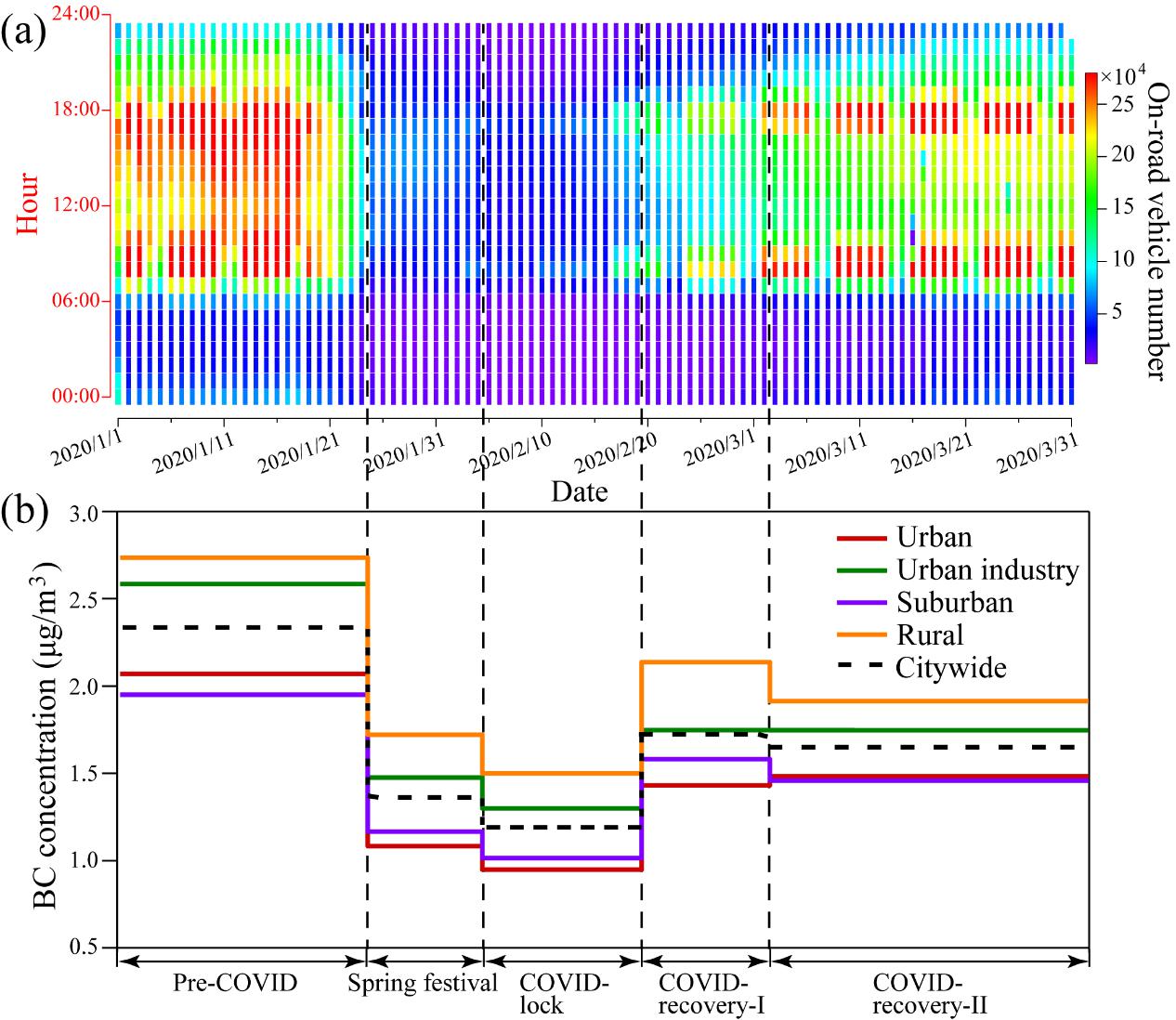Editor: 邵丹蕾 Author: Time: 2020-12-01 Number of visits :176
Summary: The researchers assess sources and variations of black carbon (BC) in a megacity of China during the COVID-19 pandemic. The results show that various vehicles in the urban can emit almost half of BC particles in the air. The reduction of vehicular emissions can be future plan for the modern megacities to take benefit for human health and regional climate warming.
Black carbon (BC) as one type tiny particle suspends in the atmosphere. BC normally have high mass concentrations nearby the source. In the megacity, BC particles pose a big threat to public health and are considered as a regional climate forcer. For a long time, scientists want to clearly know the distribution and sources of BC in the megacity. However, it is difficult to assess BC sources because BC do not have any particular marker for their sources.
In the early 2020, the COVID-19 broken out in the China and the national lockdown totally changed people activities. As a result, the national lockdown also created one natural laboratory for atmospheric environment. Weijun Li and his colleagues from Zhejiang University want to know how much BC reductions responding to the national lockdown and further understand the BC source in megacity of China.
The researchers took 9 air monitoring stations covering the urban, urban-industrial, suburban, and rural sites. They used machine learning to obtain deweathered BC mass concentrations which can remove the meteorological effects in the megacity. Then, they quantified that the BC concentrations during the COVID lockdown period were reduced by 44% from 2.30 to 1.29 μg/m3 following the strictest lockdown policies in a megacity. The study found that vehicle emission reduction responded to BC decline in the urban area and biomass burning in rural areas around the megacity had a regional contribution of BC. The BC reduction and source assessment during the COVID-19 lockdown in the megacity Hangzhou provides us with a clear picture of how to reduce BC in the megacities of China in the future.

Figure (a) The hourly averaged vehicle number running on the roads showing the variation in traffic in downtown Hangzhou. Data source: Hangzhou Traffic Police Division. The figure was generated using Igor Pro-based computer programs developed by (Wu et al. (2018)). (b) The mean deweathered BC concentration in different areas during the five stages. The detailed BC concentration is presented in Table S3.
Journal Reference:
Liang Xu, Jian Zhang, Xin Sun, Shengchen Xu, Meng Shan, Qi Yuan, Lei Liu, Zhenhong Du, Dantong Liu, Da Xu, Congbo Song, Bowen Liu, Gongda Lu, Zongbo Shi, Weijun Li. Variation in Concentration and Sources of Black Carbon in a Megacity of China During the COVID-19 Pandemic, Geophysical Research Letters, 2020. https://doi.org/10.1029/2020GL090444
